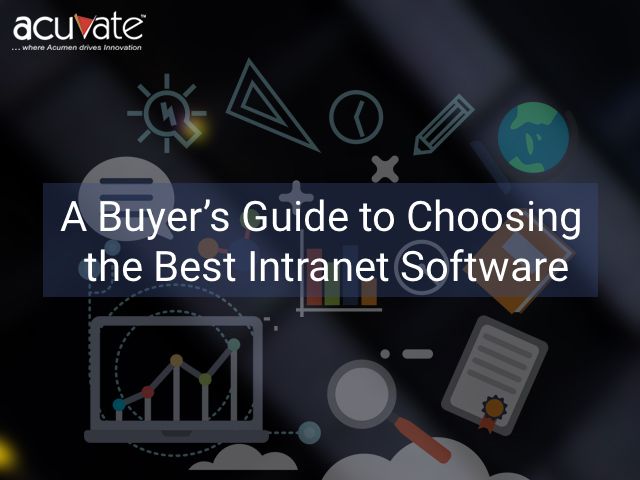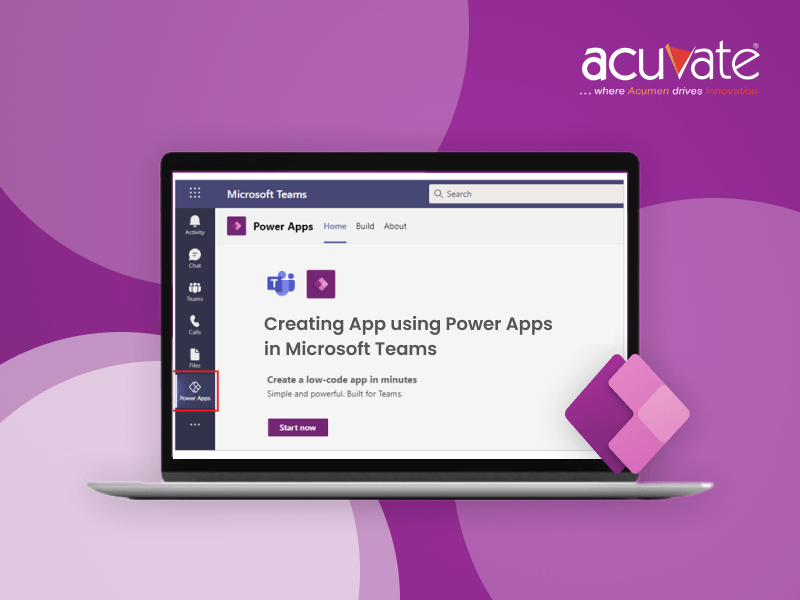The enterprise collaboration market is estimated to grow from USD 26.68 Billion in 2016 to USD 49.51 Billion by 2021, at a Compound Annual Growth Rate (CAGR) of 13.2%. [Source: Markets and Markets]
Investing in the modern digital workplace is bound to be a heavy investment. But, there is no arguing of its benefits when compared with continuing the usage of legacy intranets. Intranets serve multiple purposes in an organization – of which, improved collaboration, better communication and increased productivity are the more sought-after advantages.
However, with the increasing popularity of intranet software, the market is also saturated with a plethora of options, often leaving businesses in a lurch, as to which one would produce the most lucrative business outcomes.
When selecting an intranet software for your business, it is important to start with a complete understanding of exactly what needs and challenges your employees experience, and how you plan to address them. Your employees may require a better method of online collaboration or a one-stop platform to manage work schedules rather than log into multiple sites. It’s important that you spend the time to adequately evaluate these pain points, so you are better able to prioritize specific features when making your decision.
A report by Gartner reveals that at least 40% of intranets fail and result in diminished ROI due to low adoption rates. There is no one size fits all solution when it comes to intranets. This means that organizations will have invest serious effort into finding the solution that best fits their specific business goals.
Below we provide a list of vital factors you must consider when choosing the best intranet software,
1. What are your business goals?
Whether you are looking to increase collaboration among employees, or provide your employees with a single platform to coordinate work schedules, it’s important to clearly define what business goals you are attempting to address. It’s important to check if the software options you are considering will help you achieve these goals. Your specific business challenges and pain points will define the features you will need to look for, hence ensuring that your final choice of software will generate the ROI you are looking for.
2. Do you want to go for cloud-based solution or on-Premise?
The argument for cloud vs on-premise has been going on for years now. This is one of the first things you will have to decide when looking at various intranet softwares. The advantages of choosing a cloud-based solution range from reduced operating expenses by the partial or complete outsourcing of the IT department, and the ease of access to data – anytime, anywhere, and from any device.
But perhaps, your organization isn’t cloud ready yet. It could be because you are extremely cautious about security or there are specific legacy investments that require you to to continue their usage, or it could be simply because board members/management are not all on the same page. It’s important to eliminate inconsequential factors from the decision-making process, in order to choose the right intranet software for your business.
3. What kind of a budget and cost structure are you looking to fit?
When choosing an intranet platform, there are various options available to businesses, as far as cost-structures are concerned. Depending on how your budgets are allocated, you may consider purchasing it upfront as capital expense, or you may consider a subscription-based model, as operating expense, in which you pay a monthly fee for the license. You will also have to check whether managed support services are included, or if you’ll have to purchase separately by paying an additional fee. Any customizations you will require to ensure that the software fits your specific business needs will also have to be considered.
It’s, of course, a much more economical decision to choose an out of the box intranet solution. If you are clear about the specific features you require and what challenges you are looking to address, it would definitely be prudent to choose a ready solution that meets your requirements, by and large. If you’re an SMB looking to keep costs low, you would benefit from a subscription-based or pay-as-you-go model. If your organization is small and growing, this makes even more sense, because you can continue to add users as your business grows, an option that would not be available at reasonable costs with an on-premise solution.
4. Have you considered integration and flexibility?
Integration is one of the most critical factors to look out for when making your purchase. If you’ve been running your business for any given amount of time, you most likely already have a set of business processes in motion – that make use of specific tools. The general goal of using an intranet is to do away with the usage of multiple applications, and be able to access daily business activities from one integrated platform. If your employees are not using the intranet portal for a large majority of their daily activities, chances are they will be using other software solutions.
In an effort to appeal to a majority of businesses, most intranet solutions take a “one-size-fits-all” approach, without even the smallest degree of flexibility. This can spell bad news for your business. Scalability will become crucial as your business grows. You should be able to shift specific aspects of your network, as and when the need for it arises. Therefore, it is important to check if the intranet software you are choosing allows room for flexibility and customization. Your business deserves a singular approach to choosing a solution that does not hinder your growth across any direction. Ease of use and automation may sound good initially, but these factors are only part of the equation. Ensure that you are keeping integration and flexibility on top of your mind, when making your selection.
5. How well-designed is the user experience of the intranet?
In order to ensure consistent intranet adoption rates, it is imperative that the intranet provides seamless and intuitive experiences to employees. An intuitive experience is particularly crucial in ensuring that your employees are able to make productive use of the intranet without requiring additional training for it. Evaluate the architecture and design of the solution to verify that it does meet these requirements and it can adequately address your organization’s challenges. Another aspect to be mindful of is mobile. Sure, it is common now for most (if not all) intranet software to be built to work on any device. But, it’s also important to consider how well these experiences have been designed. It is becoming increasingly evident that solving for the mobile experience is not merely an option, but an extreme necessity.
Also, check if mobile access is available only through mobile browsers, or if there are specific mobile apps your employees can install to their devices and connect to. Mobile apps serve dual functions in that they can provide both a native user experience, as well as rich functional experiences. Also, consider the different people who will be logging into the intranet – including the administrators and content contributors.
It is important to keep content on the intranet fresh. If your users are provided the same content day after day, they will quickly lose interest, leading to diminished adoption rates. Therefore, it is crucial to ensure that you have a consistent flow of new and relevant content being added to the site.
Watch Now: On-Demand Webinar on Key User Experience Principles To Follow For Next-Gen Intranets
6. What are the essential features to look for?
Your expectations from an intranet software will obviously vary based on your specific organization goals. However, while required features may vary from one organization to the next, there are a few important ones that cut across most businesses. These include ideation and innovation management, forum and commenting capabilities, easy administration, employee profiles, efficient mobile user experience, document sharing, easy deployment, intuitive design, customization and flexibility, integration, compatibility, clean user interfaces, and so on.

Chatbots are the latest addition to the evolving intranet landscape. They are being increasingly implemented into intranets in order to drive adoption rates and provide incredibly simplified, yet powerful user experiences. Bots can stay connected to your intranet bringing latest information, news, updates and more to users. Bots can also be trained to answer questions on Intranet usage and can assist employees and content authors. Bots can also be personalized to align with your business values and organizational culture
Read More: The Role of Chatbots in The Intranet.
Start a Pilot and Measure Performance
As they say, the proof of the pudding is in the eating. Now that you know the essential features to look out for, consider initiating a pilot and carefully observe performance, so you will know how well your intranet is serving your business requirements.
You may consider Acuvate’s Meshbot for your intranet software needs. It is an integral part of our Sharepoint based next generation intelligent intranet – Mesh and is available for standalone purposes as well.
MeshBot with which you can both “converse” and automate your tasks. Not only does it give smart and personalized responses to a user’s query but also automates the rather tedious process of updating content on the intranet. You can also automate and streamline mundane, labor-intensive tasks for various departments of your organization. MeshBot will work 24/7 to help drive adoption and keep your audience engaged.
Worried about ROI? Mesh also comes equipped with a powerful analytics solution for high scalability.
This analytics component of Mesh – SharePoint Analytics is particularly advantageous for businesses looking to obtain deep insights into their SharePoint intranet. You can obtain detailed reports on usage, site and page popularity, most downloaded documents, most active users, search keyword analysis and more. This will help you customize your intranet to better meet the needs of your employees.
Finally,
Before you kickstart your exhaustive search for the right intranet software solution, take the time to establish a ccross-functionalbusiness and IT team to recognize the common complaints of employees. Also, since the budgets required are typically high for making an investment such as this, ensure that you are acquiring active participation from the executive team. This will guide your intranet shopping process in the right direction.
If you are interested to know more about SharePoint Intranets, you can even refer the ClearBox’s 2018 report on SharePoint Intranets in-a-box.
Acuvate’s AI-Powered Intranet Software – Mesh
Mesh is a ClearBox-acclaimed SharePoint based intranet software powered with AI chatbots. It is used by several Fortune enterprises, SMBs and start-ups. Below is a quick video of how Mesh functions. You can learn more about Mesh and schedule a free demo here.
If you’d like to learn more about this topic, please feel free to get in touch with one of our experts for a personalized consultation.



